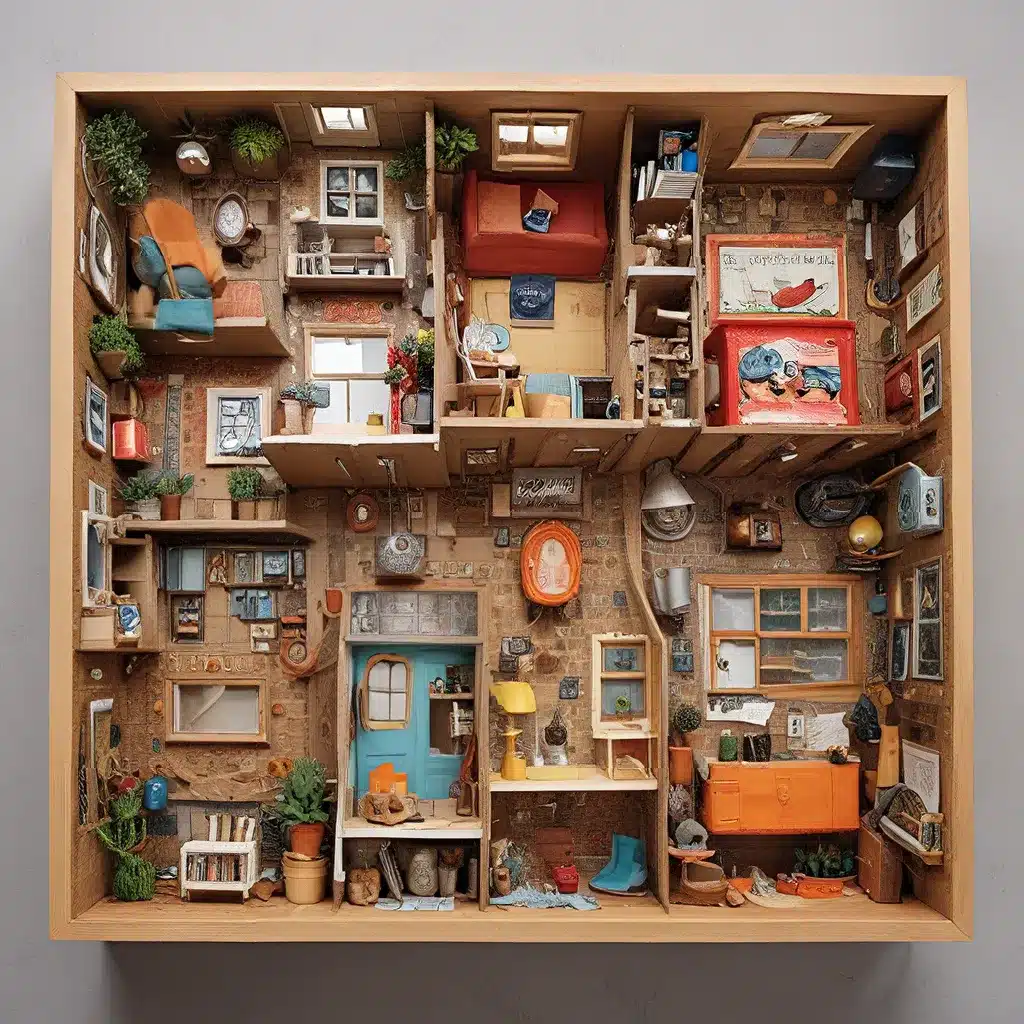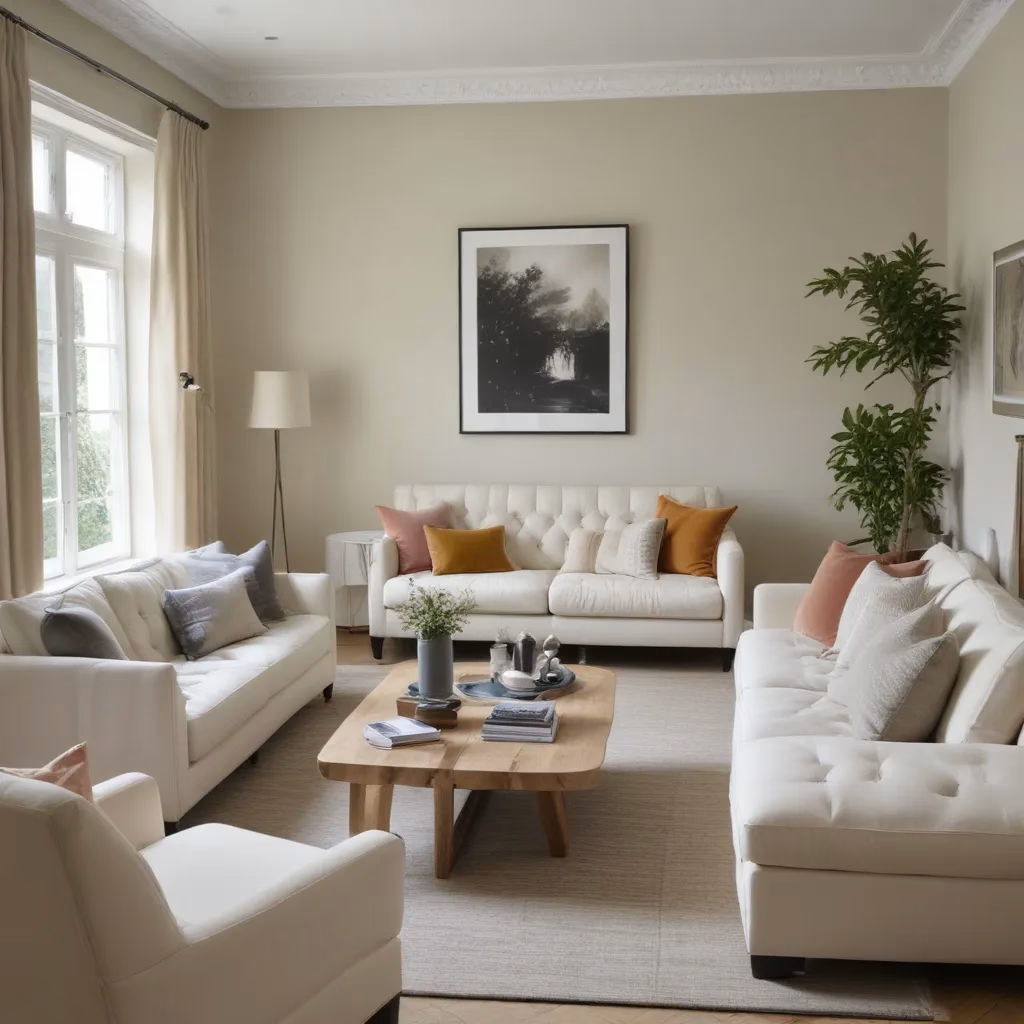
Have you ever walked into a room and felt like the furniture was just… out of place? Like no matter how hard you tried, you couldn’t quite get that “magazine-worthy” look? Well, my friend, you’re not alone. As someone who’s worked with countless clients on designing their dream homes, I can attest that small, quirky layouts can be a real challenge.
But you know what they say – where there’s a will, there’s a way! And today, I’m here to share some of my top tips and tricks for creating beautiful, functional spaces, even in the most awkward of rooms.
Embrace the Unexpected
One of the biggest mistakes I see people make when dealing with small or unconventional layouts is trying to force a “traditional” design approach. But here’s the thing – when you’ve got a quirky space, the last thing you want to do is fight against it. Instead, embrace the unexpected and let it inform your design choices.
Take, for example, the client I worked with who had this adorable little alcove in their living room. At first glance, it seemed like an odd, awkward space – but with a little creativity, we were able to turn it into the focal point of the room. We used a curved, tufted sofa to echo the shape of the alcove, and added some playful, asymmetrical shelving to create a sense of depth and character.
The key was to work with the space, rather than against it. Instead of trying to fit a standard rectangle sofa in there, we embraced the unique shape and let it guide our design choices. And the result? A cozy, inviting space that feels like it was always meant to be there.
Layer, Layer, Layer
Another common challenge with small or quirky layouts is figuring out how to add visual interest without making the space feel cluttered or overwhelming. And the secret? Layering.
Now, I know what you’re thinking – “Isn’t that just fancy talk for ‘adding more stuff’?” But trust me, there’s a bit more to it than that. It’s all about creating depth and dimension through the strategic placement of furniture, art, and accessories.
Take, for example, the study design in the Citrus Point Project that I recently completed. The space started out feeling a bit boxy and uninspired, but by adding things like a barreled arched detail around the desk area, reeded paneling, and a variety of lighting fixtures, we were able to create a sense of layered interest that really brings the room to life.
And the best part? This approach works just as well in a small space as it does in a larger one. The key is to be strategic about what you’re adding and where you’re placing it. Rather than just filling the room with stuff, think about how each element can work together to create a cohesive, visually-interesting design.
Embrace Multifunctional Pieces
When you’re dealing with a small or quirky layout, every square inch of space counts. And that’s where multifunctional furniture and decor can be a real game-changer.
Take, for example, the pull-out surfaces that we incorporated into the base cabinets in the Citrus Point Project study. Not only do they provide extra surface area for things like laptops or drinks, but they also serve as handy side tables for the sofa. It’s a small detail, but one that can make a big difference in a tight space.
Or consider a coffee table with built-in storage – perfect for stashing away those inevitable clutter-collectors (you know, the remote controls, magazines, and other odds and ends that tend to accumulate). Or a console table that doubles as a bar cart, complete with built-in wine racks and stemware storage.
The key is to think outside the box and really consider how each piece of furniture or decor can serve multiple purposes. After all, in a small space, every inch counts!
Bring in the Light
You know the old saying – “light makes everything better”? Well, when it comes to small or quirky layouts, that couldn’t be more true. Proper lighting can be the difference between a space that feels cramped and claustrophobic, and one that feels open, airy, and inviting.
One of my favorite tricks is to incorporate a mix of ambient, task, and accent lighting throughout the room. Ambient lighting, like recessed can lights or a statement chandelier, helps to provide a warm, even glow. Task lighting, such as floor lamps or sconces, can be used to highlight specific areas or activities. And accent lighting, like picture lights or LED strips, can be used to draw the eye to specific design elements or focal points.
In the Citrus Point Project study, for example, we used a variety of lighting techniques to create a sense of depth and interest. The barreled arched detail around the desk area provided the perfect opportunity to incorporate wall sconces, while the picture light above the desk added a touch of elegance and drama. And in the sofa alcove, we repeated the wall sconce placement to create a cozy, intimate feel.
The result? A space that feels bright, open, and inviting – even in the face of a rather quirky layout.
Bring the Outdoors In
One final tip for creating a beautiful, functional space in a small or quirky layout? Bring the outdoors in!
Now, I know what you’re thinking – “But won’t that just make the space feel even smaller?” And I get it, it’s a valid concern. But hear me out.
When done right, incorporating natural elements like plants, natural materials, and even outdoor-inspired furniture can actually help to create a sense of airiness and openness. It’s all about striking the right balance and using those elements in a way that complements the existing architecture and design.
Take, for example, the floor plan review I did for a client who was worried that their new custom home felt too “cookie-cutter.” By incorporating things like large windows, natural wood accents, and even a lush indoor plant wall, we were able to transform the space and give it a fresh, airy feel that felt so much more in tune with the surrounding landscape.
And the best part? This approach works just as well in a small, quirky layout as it does in a larger, more open-concept space. The key is to be strategic about how you incorporate those natural elements, and to make sure they feel like they’re an intentional part of the overall design.
Bringing it all Together
So there you have it – my top tips and tricks for creating beautiful, functional spaces, even in the most quirky of layouts. From embracing the unexpected to layering in lighting and natural elements, the key is to approach each design challenge with an open mind and a willingness to think outside the box.
And remember, no matter how daunting a small or unconventional space may seem, there’s always a solution. All it takes is a little creativity, a whole lot of determination, and a dash of that signature Sofa Spectacular flair. After all, Sofa Spectacular is all about helping our clients transform their homes into spaces that are as unique and special as they are.
So what are you waiting for? Let’s get started on creating the custom sofa of your dreams and turning that quirky layout into something truly spectacular.



